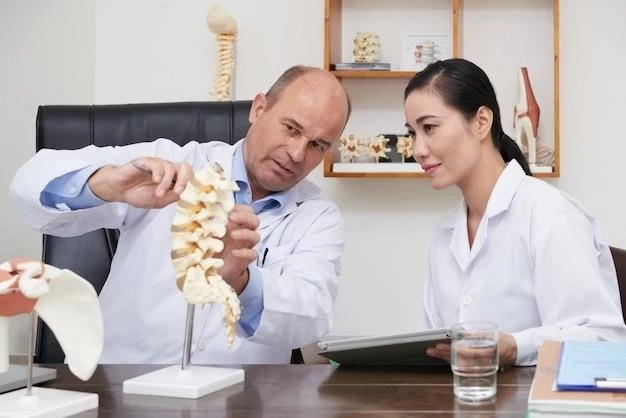Causes of Axial Spondyloarthritis
Symptoms and Diagnosis of Axial Spondyloarthritis
Causes of Axial Spondyloarthritis
Axial Spondyloarthritis is thought to be triggered by a combination of genetic predisposition and environmental factors such as bacterial infections. Researchers believe that an overreactive immune system plays a key role in the development of this condition.
Symptoms and Diagnosis of Axial Spondyloarthritis
Symptoms include back pain and stiffness, which worsen with rest and improve with movement. Diagnosis involves a thorough medical history, physical examination, imaging tests like X-rays, and sometimes blood tests to detect inflammation markers like C-reactive protein.
Treating Axial Spondyloarthritis
Treatment Options for Axial Spondyloarthritis
Lifestyle Management for Axial Spondyloarthritis
Treatment Options for Axial Spondyloarthritis
Treatment aims to reduce pain, stiffness, and inflammation. Options include NSAIDs, biologic medications, physical therapy, and regular exercise to improve flexibility and strength. In severe cases, surgery may be considered to address joint damage.
Lifestyle Management for Axial Spondyloarthritis
Managing stress, maintaining good posture, quitting smoking, and getting regular exercise are key in managing axial spondyloarthritis. Adequate rest, a balanced diet, and staying hydrated can also help improve overall well-being and reduce symptoms.
Genetics and Axial Spondyloarthritis
Role of Genetics in Axial Spondyloarthritis
Role of Genetics in Axial Spondyloarthritis
Genetic factors like the HLA-B27 gene influence the risk of developing axial spondyloarthritis. Individuals with a family history of the condition are more likely to inherit these genetic markers, increasing their susceptibility to the disease.

Axial Spondyloarthritis in Specific Demographics
Axial Spondyloarthritis in Young Adults
Axial Spondyloarthritis in Young Adults
Axial spondyloarthritis can present differently in young adults, often causing delayed diagnosis due to symptoms being mistaken for mechanical back pain. Early recognition and treatment are crucial to prevent long-term complications and improve quality of life in this age group.
Additional Considerations for Managing Axial Spondyloarthritis
Managing Pain in Axial Spondyloarthritis
Research Developments in Axial Spondyloarthritis
Managing Pain in Axial Spondyloarthritis
Pain management in axial spondyloarthritis involves a multidisciplinary approach with medications, physical therapy, and lifestyle modifications. Heat and cold therapy, relaxation techniques, and regular exercise can help alleviate pain and improve overall quality of life for individuals with this condition.
Research Developments in Axial Spondyloarthritis
Ongoing research in axial spondyloarthritis is focusing on identifying new treatment targets, exploring personalized medicine approaches, and investigating the role of the microbiome in disease progression. Advances in understanding the pathophysiology of the condition are paving the way for innovative therapies and improved management strategies.
